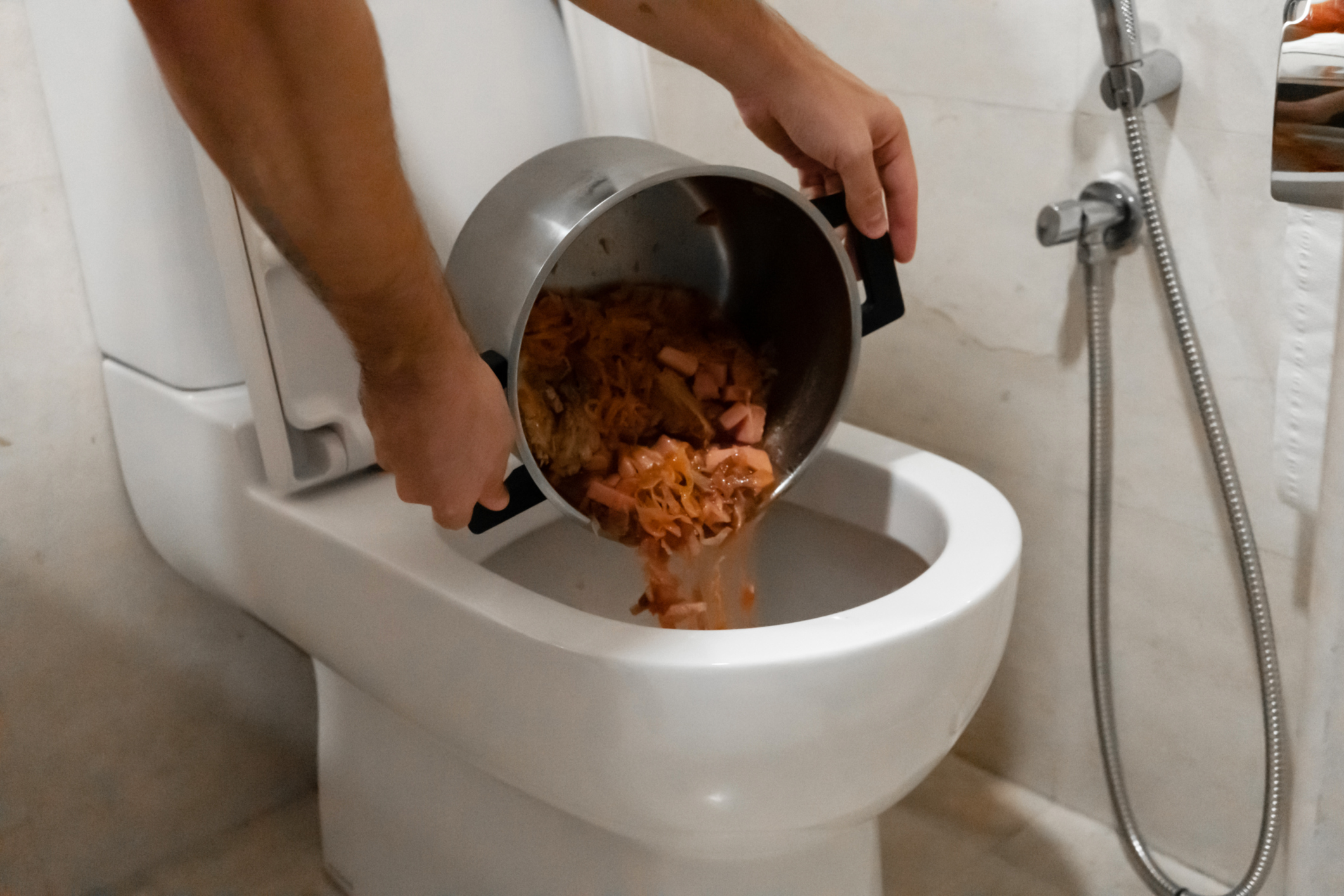This great article in the next paragraphs about Is it safe to flush food (especially rice) down the toilet? is amazingly informative. Read it for yourself and decide what you think of it.

Introduction
Lots of people are often faced with the issue of what to do with food waste, specifically when it comes to leftovers or scraps. One typical question that develops is whether it's all right to flush food down the toilet. In this short article, we'll delve into the reasons why individuals might consider flushing food, the consequences of doing so, and alternative approaches for correct disposal.
Reasons why people may consider flushing food
Lack of recognition
Some people might not be aware of the potential injury caused by flushing food down the toilet. They may erroneously think that it's a harmless method.
Comfort
Flushing food down the bathroom may appear like a quick and simple service to disposing of undesirable scraps, specifically when there's no neighboring trash can available.
Idleness
In many cases, individuals may simply pick to flush food out of large negligence, without considering the effects of their activities.
Effects of flushing food down the bathroom
Environmental influence
Food waste that winds up in waterways can add to contamination and damage marine ecological communities. In addition, the water utilized to flush food can stress water sources.
Plumbing concerns
Flushing food can bring about stopped up pipes and drains pipes, causing pricey plumbing repair work and inconveniences.
Sorts of food that ought to not be purged
Fibrous foods
Foods with coarse textures such as celery or corn husks can obtain tangled in pipelines and cause obstructions.
Starchy foods
Starchy foods like pasta and rice can take in water and swell, leading to obstructions in pipelines.
Oils and fats
Greasy foods like bacon or cooking oils need to never be purged down the toilet as they can strengthen and create blockages.
Proper disposal techniques for food waste
Making use of a garbage disposal
For homes outfitted with garbage disposals, food scraps can be ground up and purged via the plumbing system. Nevertheless, not all foods appropriate for disposal in this manner.
Recycling
Specific food packaging materials can be reused, reducing waste and reducing ecological influence.
Composting
Composting is an environment-friendly means to deal with food waste. Organic products can be composted and made use of to improve dirt for horticulture.
The importance of proper waste administration
Minimizing ecological injury
Proper waste management methods, such as composting and recycling, assistance decrease contamination and protect natural deposits for future generations.
Shielding pipes systems
By staying clear of the technique of flushing food down the toilet, homeowners can avoid expensive plumbing repair work and keep the honesty of their pipes systems.
Verdict
Finally, while it might be alluring to purge food down the bathroom for comfort, it is very important to comprehend the prospective consequences of this activity. By taking on correct waste administration techniques and getting rid of food waste properly, people can contribute to much healthier pipes systems and a cleaner atmosphere for all.
FLUSH FOOD DOWN THE TOILET?
FLUSHING FOOD CAN CAUSE BLOCKED DRAINS IN YOUR HOME
All of the plumbing fixtures in your home are connected to the same sewer pipe outside of your home. This outdoor sewer pipe is responsible for transporting all the wastewater from your home to the Council sewer mains. Even small pieces of food that go down the kitchen sink can cause problems for your sewer. It should therefore be obvious that flushing larger bits of food, such as meat, risks a clog in either the toilet itself or the sewer pipes. Flushing greasy food is even more problematic because oil coagulates when it cools, coating the interior lining of your pipes.
THE TOILET IS NOT A BIN
Food isn’t the only thing that people shouldn’t be flushing down the toilet. People use the toilet to dispose of all kinds of things such as tampons, makeup wipes, dental floss, kitty litter and even underwear. Water goes to great lengths to educate residents about the high costs and stress placed on wastewater treatment systems simply from people flushing the wrong stuff down the toilet. It costs taxpayers millions of dollars each year, and homeowners thousands in blocked drain repairs.
FLUSHING FOOD IS A WASTE OF WATER
Flushing food is a waste of our most precious resource - water. In June this year Level 1 water restrictions were introduced to protect water supply from drought conditions. Much of New South Wales continues to be affected by prolonged drought with recent figures revealing up to 97 per cent of the state remains in drought. Depending on whether you have a single or dual flush toilet, every single flush uses between five and 11 litres of water. In the current climate this is a huge amount of water to be wasting on flushing food that should be placed in the bin (or better yet, the compost).
https://www.jabplumbingsolutions.com.au/blog/can-you-flush-food-down-the-toilet

As a keen person who reads on Is it safe to flush food (especially rice) down the toilet?, I think sharing that piece of content was worth the trouble. Sharing is caring. You never know, you may very well be doing someone a favor. Thanks for your time spent reading it.
Call Today